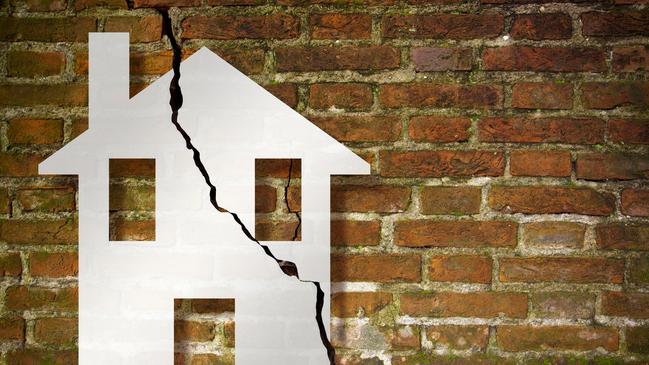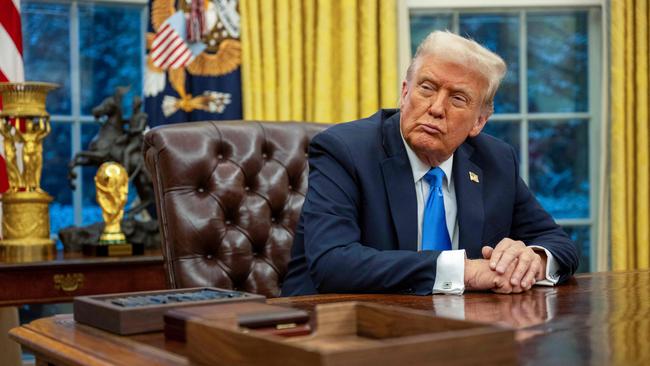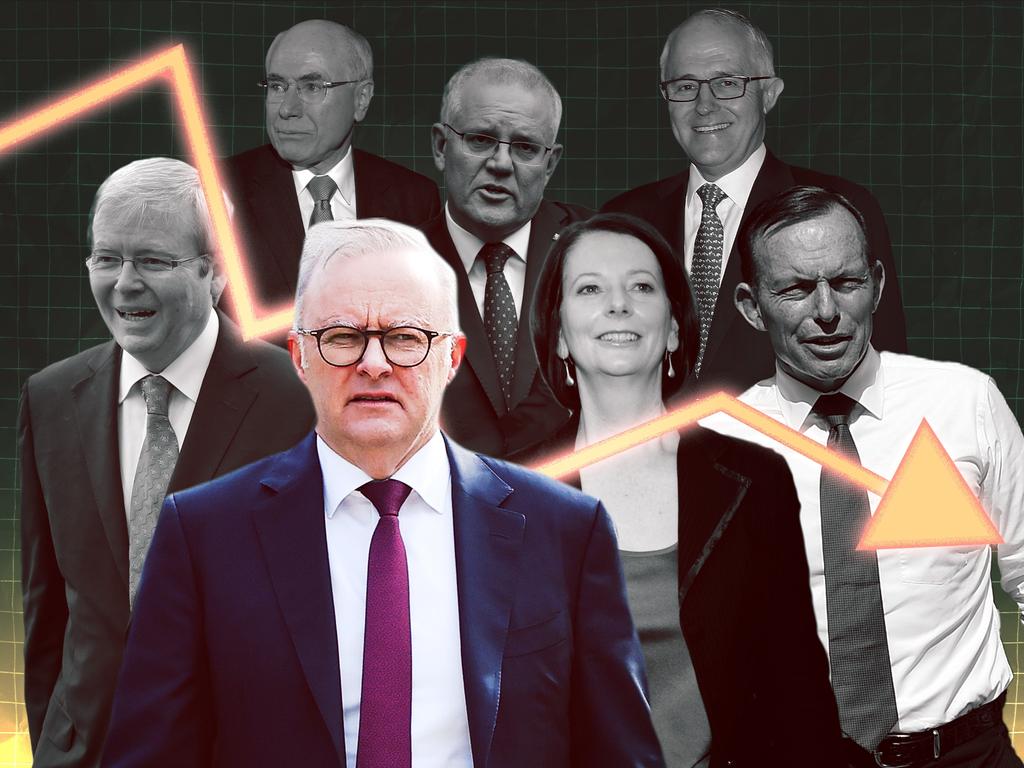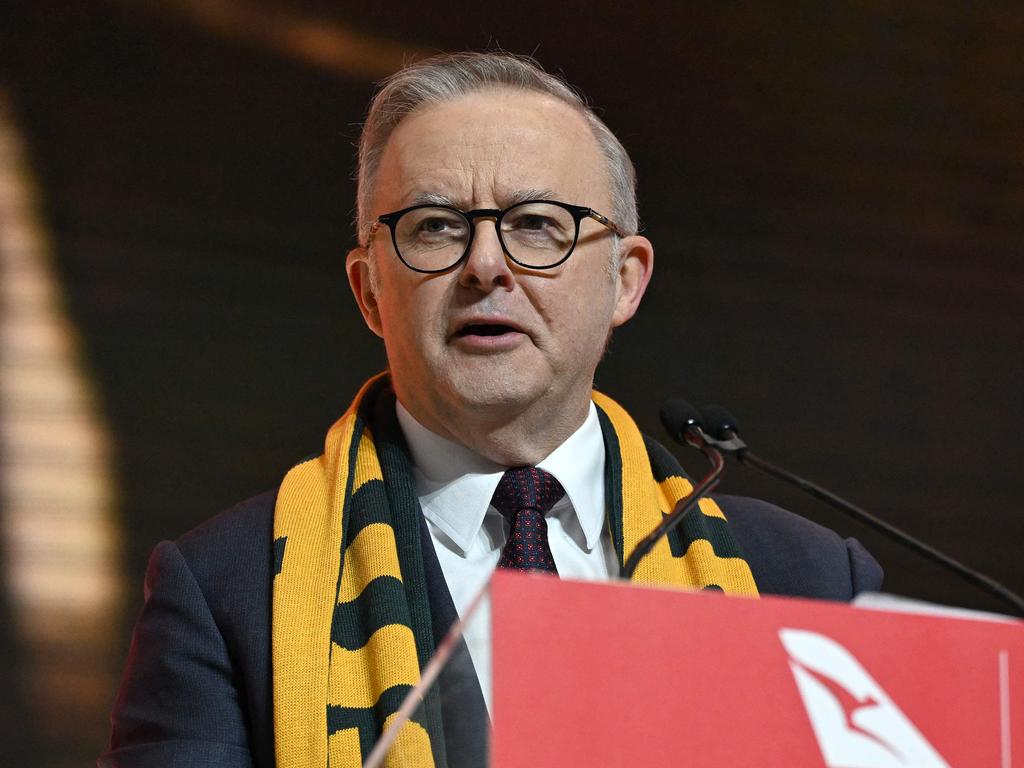Economic earthquake that will be good news for homeowners
While Donald Trump is shaking up the global system, our central bank is on the verge of its own earth-shattering move.

In coming days Reserve Bank of Australia governor Michele Bullock and her board are expected to begin a new phase of easing monetary conditions.
The last time the central bank announced a cut in the official cash rate was during the Covid recession in November 2020, to an all-time low 0.1 per cent.
At the time Philip Lowe, RBA governor at the time, said given the outlook for inflation, wages and employment, “the board is not expecting to increase the cash rate for at least three years”.
But 18 months later conditions had changed as inflation surged amid global supply snarls and easy money. The era of higher borrowing rates was born, with 13 cash-rate hikes across the next year and a half.
According to the Australian Bureau of Statistics, mortgage interest charges for the average working household have increased by 153 per cent since mid-2022. The monetary squeeze is eating up a record share of family budgets and has dominated an entire federal parliamentary term.
But pain relief for borrowers is in sight ahead of an election that must be held before winter. While the US President struts his stuff with a Sharpie marker, it’s the RBA rather than Washington that largely will dictate the immediate political economy in our (Trump voice) “rather far away” land.

The last time Bullock made public comments was nine weeks ago, when she welcomed new appointments to the RBA’s governance board and monetary policy board. Minutes from the December meeting, published on Christmas Eve, are the best guide to the board’s policy mindset and messaging. There was the signature implacability about the board’s “minimal tolerance to accommodate a more prolonged period of high inflation than currently envisaged”. But there was some hope for homeowners and businesses to chew on across the summer.
“If the future flow of data continued to evolve in line with, or weaker than, their expectations, it would further increase their confidence that inflation was declining sustainably towards target,” the board minutes state. “If that were to occur, members concluded that it would, in due course, be appropriate to begin relaxing the degree of monetary policy tightness.”

As always, the board would be guided by how the incoming data shaped the outlook and the attendant risks. The December quarter consumer price index, published more than a fortnight ago, was lower than the RBA’s staff and private forecasts, although not yet within the 2 to 3 per cent target band. Notably, the central bank’s preferred measure of underlying inflation known as the trimmed mean (which looks at the middle 70 per cent of the CPI basket, after removing the top and bottom 15 per cent of price movements) had fallen to 3.2 per cent; the market herd charged off to feed on the tufts of a lower monetary terrain.
Other measures of core inflation, known as weighted median and excluding volatiles, came in at 3.4 per cent and 2.7 per cent.
Some central banks, including in the US, Canada, Europe and New Zealand, use a statistical method called factor modelling to gauge the inflationary pulse. In simple terms, this approach places less weight on prices that tend to move in idiosyncratic ways and more weight on prices that move together.
According to the e61 Institute’s Nick Garvin and the University of Sydney’s Luke Hartigan, both former RBA economists, on this new measure annual underlying inflation was 2.7 per cent in the December quarter and “more strongly supports the interpretation that inflation is falling relatively quickly”.
“Perhaps most importantly, it measures underlying inflation as already sustainably within the RBA’s target band,” Garvin and Hartigan write in the weekly Plus61 newsletter of the nonpartisan economic research institute where I have a paid advisory role.
Given the importance of the coming monetary policy decision, the authors argue a more diverse set of evidence should be presented to the board for deliberation.
Economists from the major home lenders expect the RBA to cut the cash rate by one-quarter of a percentage point on Tuesday. Commonwealth Bank head of Australian economics Gareth Aird says “we don’t buy into the narrative that it’s more like a 50-50 proposition”.
“The combination of both softer inflation and wages data will give the board more confidence that underlying inflation is returning sustainably to the midpoint of the RBA’s target band,” Aird wrote this week.
Digging into the latest data, Westpac senior economist Justin Smirk argues the step-down in inflation in the second half of 2024 was not just about the cost-of-living relief from Canberra and state governments. Core inflation was down because of a moderation in housing costs, a fall in the rate of price growth (or disinflation) for clothing and footwear, and a fall in the price (or deflation) for durable household goods.
Smirk says housing is the key to the fall in underlying inflation. The cost of a new home fell in the December quarter as project home builders offered discounts and incentives to buyers in a subdued market; builders’ margins are being squeezed, given the cost of materials and labour aren’t falling.
Rental inflation is also down, even taking account of the effect of increased Commonwealth Rent Assistance; slower population growth will keep downward pressure on landlords’ pricing power, with Westpac forecasting rental inflation to be 4 per cent by the end of 2026 (in 2024 it was double that rate). There’s every chance the Albanese government will extend energy rebates into the back half of 2025, but Smirk believes this won’t make any meaningful difference to core inflation.
The brains at the major banks, however, aren’t expecting a flurry of cuts from the central bank, unless things take a very nasty turn; somewhere between four and two decreases this year, with inflation settling in the band, unemployment up a tick and consumer spending in recovery mode.
The strength of the labour market, and thus the possibility that wages growth will put a floor under inflation, is a consideration for the RBA board and the most robust argument put by the small camp of analysts who say the conditions don’t yet warrant a rate cut.
We’ll have new RBA forecasts on the whole suite of economic indicators on Tuesday.
Is the RBA sufficiently confident that inflation is “moving sustainably” towards the target zone? In December the board’s confidence had grown, but it was wary of risks and uncertainty in this volatile period.
RBA deputy governor Andrew Hauser has noted “the biggest risk from all of this tariff stuff is not whether it’s good or bad but that nobody knows” what will happen.

This fog works against spending on research and development, public works, housing and infrastructure and, naturally, sends a chill through families trying to plan their budgets.
Now that the emboldened MAGA-ists are encamped in the White House and “flooding the zone” hourly, daily with policy announcements, there’s a realisation among policymakers that Australia is at the mercy of forces we cannot hope to control but must anticipate, manage and explain to the public lest the nation succumbs to fatalism or despair. And yet the not knowing is a confidence killer all around, including in the US, where buyer sentiment has soured and deal activity is down.
The Wall Street Journal reported the other day that the new administration’s conflicting business policies – a focus on lower taxes and deregulation (good), confusion over deportations, tariffs, and federal program and agency cuts (bad) – sow uncertainty.
An index of policy uncertainty based on news articles, co-developed by Stanford University economist Nick Bloom, has reached levels last seen during the pandemic and in the wake of the global financial crisis.
Trump’s self-harming moves on tariffs (and everything else on Truth Social and his photo-op info bombs) keep raising the stakes on both sides of the views on local interest rates; as the federal Treasury has warned, the broader strategic competition between the US and China contributes to “uncertainty about the path of global inflation”.
Hauser said in December the RBA would be nimble and interest rates deployed with force if needed – in either direction – to deliver its low inflation and full employment mandate. At a macro level, even with the promised assault on our steel and aluminium exporters, the direct hit to Australia’s economic growth, and inflation, is likely to be small and via the China channel.
On the question of whether the bank should cut or hold the cash rate next week, if you believe America’s tariffs are inflationary and will continue to push down the Australian dollar (making imports more expensive), you’d be wise to keep rates on hold. On the other hand, if you think the worldwide effect is less trade, weaker growth, more uncertainty, higher unemployment and therefore less inflation, you’d cut immediately just to take out a bit of insurance.
Of course, the passive-aggressive pre-election amateur policy advice from all of Canberra’s players is a factor in the public mood, but not a material one for the RBA.
Take out the partisan politics and discount those who are mired in the mud and blood of past campaigns and the case to start “normalising” rates from a restrictive setting is stronger.
It will be one small step to normality, one giant leap for the mortgage belt and family businesses, and at least a 7 or 8 on the Richter scale of news.







There’s an economic earthquake expected next Tuesday afternoon. For a change, it won’t be because of the tectonic Donald Trump, although his executive provocations keep raising the stakes for the world’s policymakers, money movers and workers.